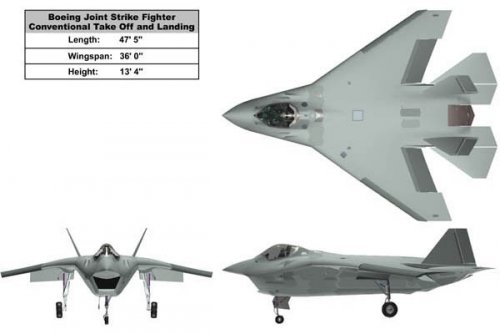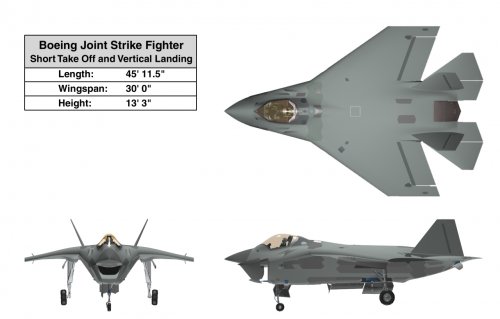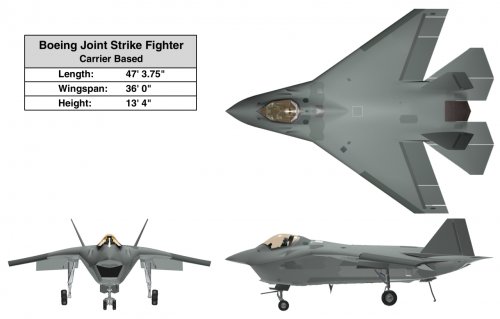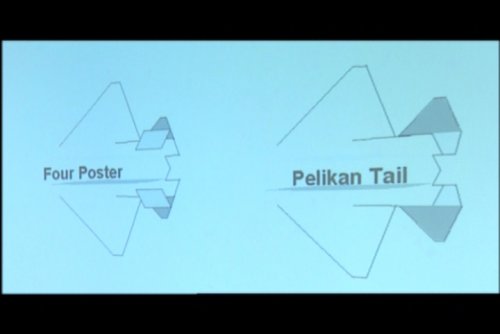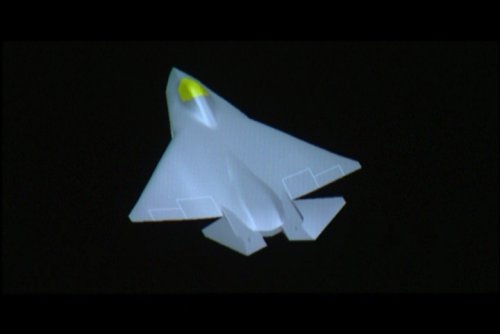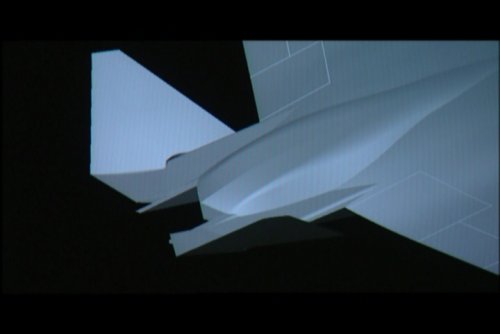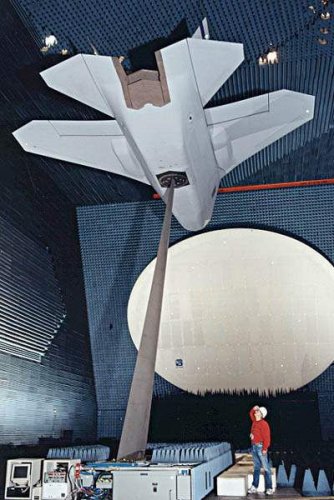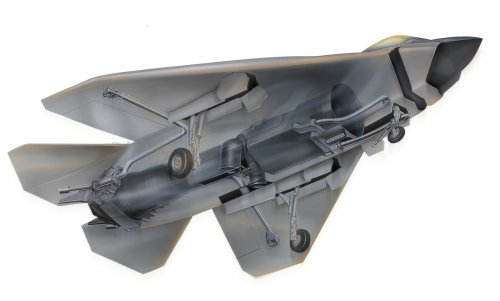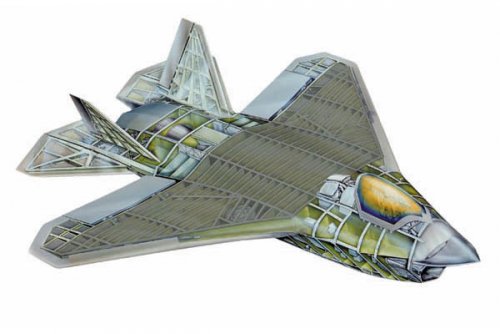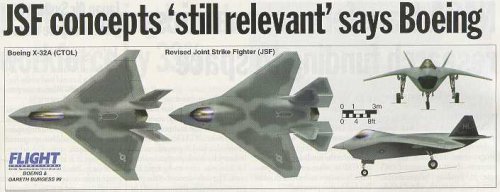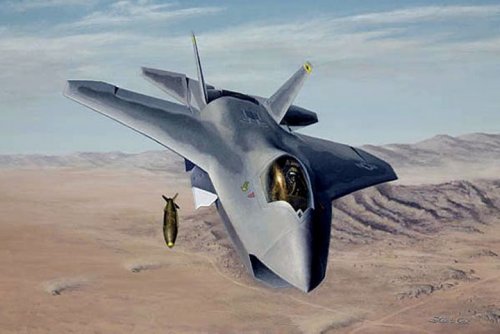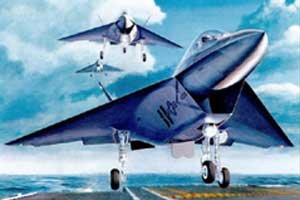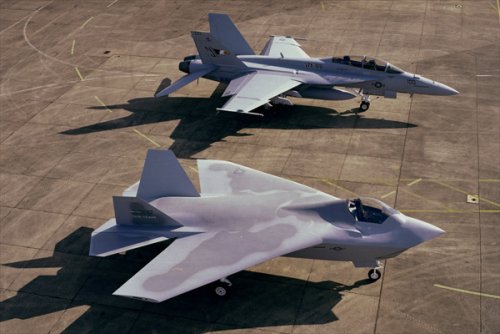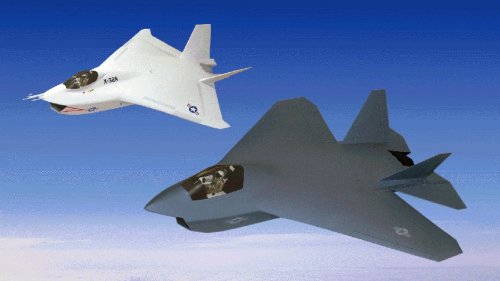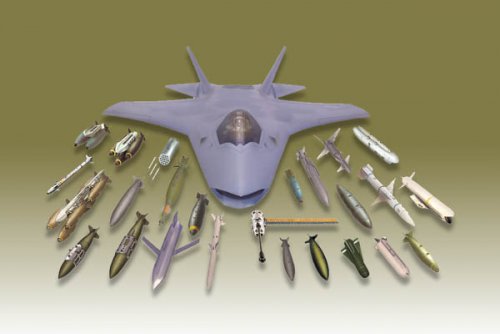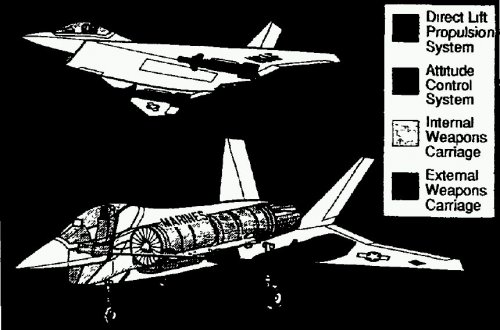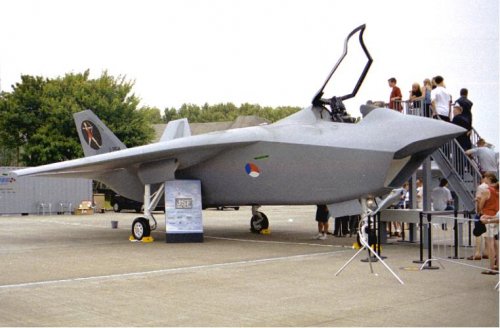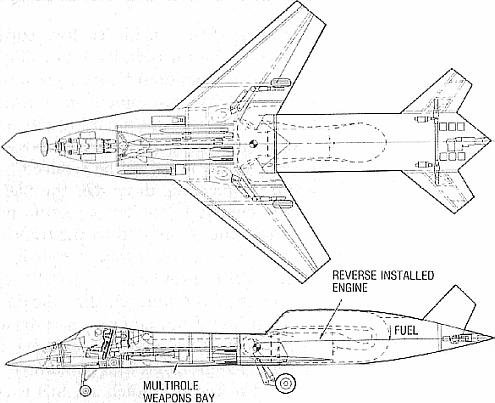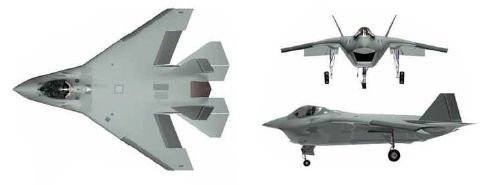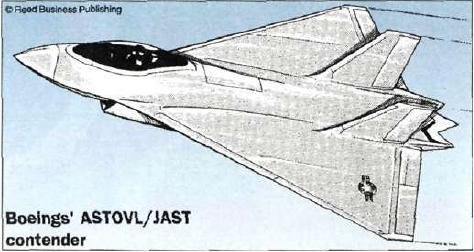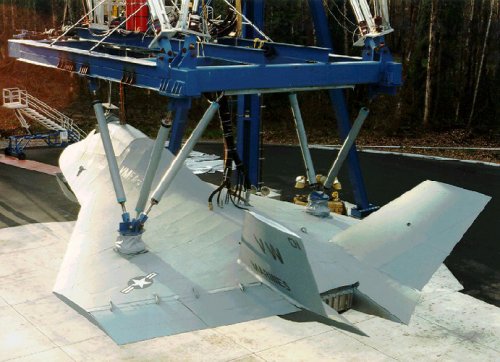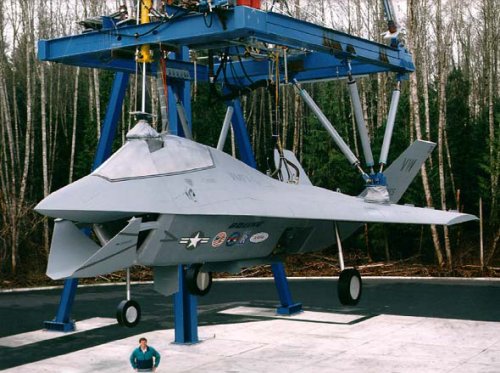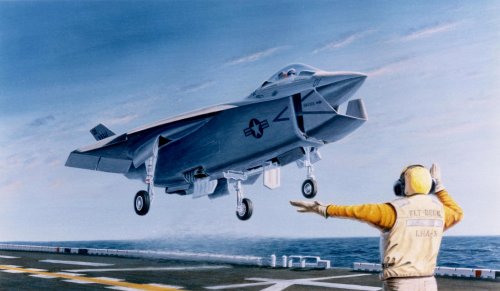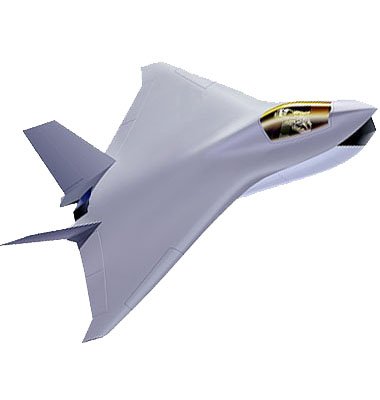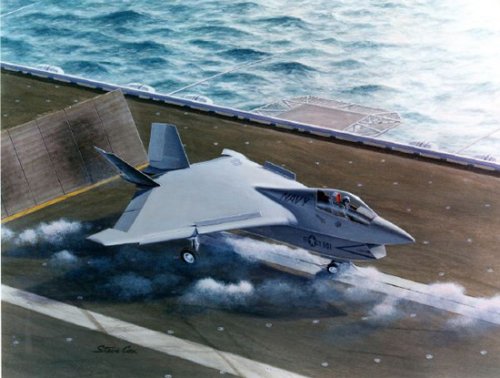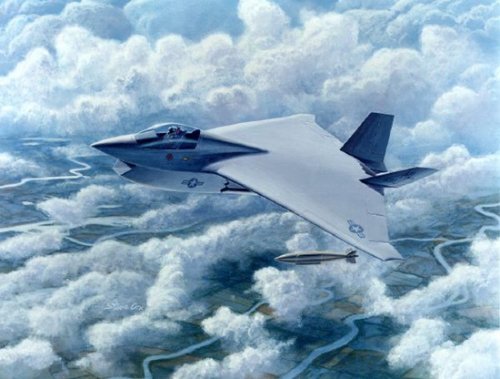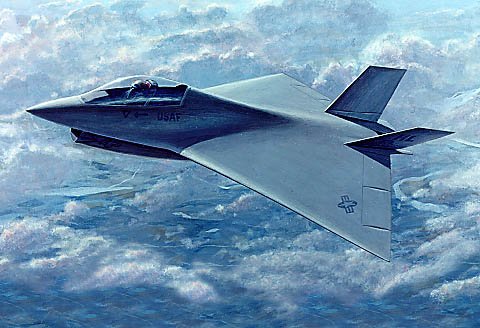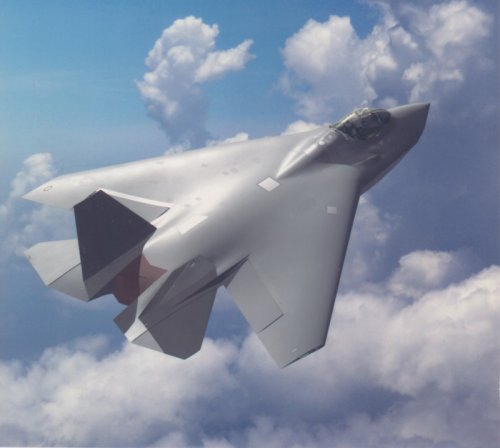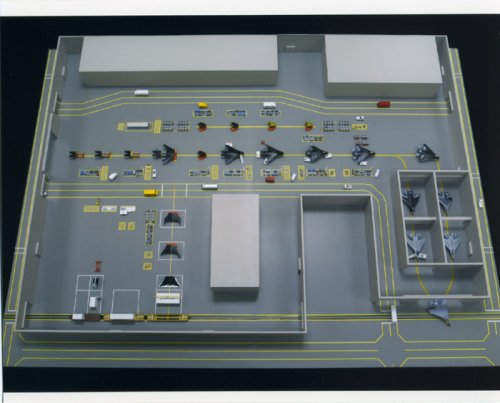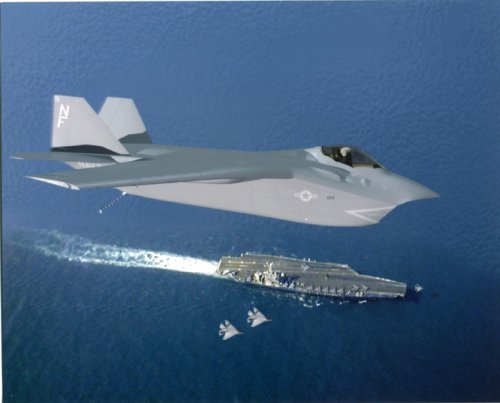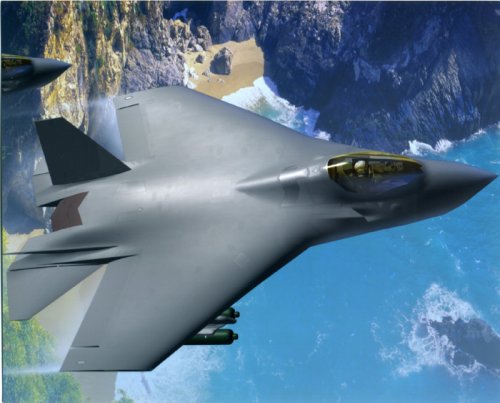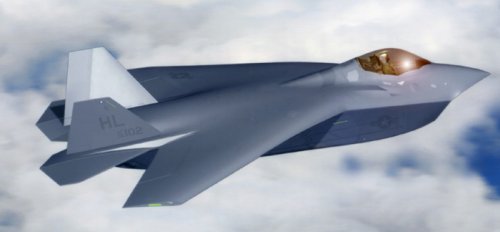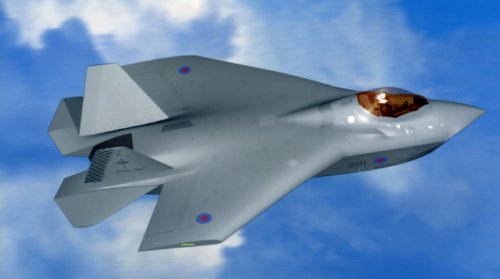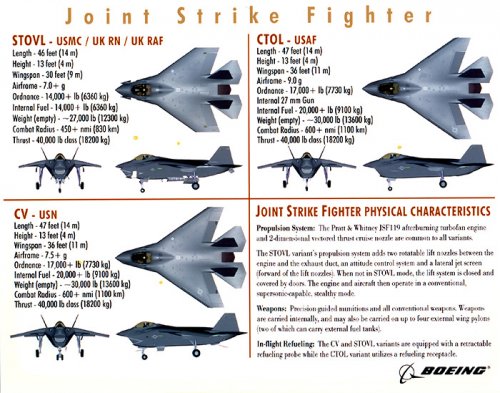Boeing is developing a delta-shaped aircraft similar to the Northrop M2-F2 lifting body. A direct-lift-propulsion concept is used for the STOVL role. "With a compact shape like that, the STOVL penalty is very small and it gives us a simple transition from jet-borne to wing-borne flight," says Mark Burgess, analysis and integration manager of Boeing Defense & Space's ASTOVL effort.
"We prefer a direct-lift solution, because it offers a lot of advantages to the [shared airframe] concept. Pratt & Whitney with their F119 teamed up with us in March 1994, as did Rolls-Royce, which has 30 years experience of direct-lift systems," says Burgess. Rolls-Royce will only be involved in the STOVL version and not the CTOL. The Boeing aircraft is described by JAST programme manager, Brig Gen George Muellner as the most interesting design in the competition. It consists of a one-piece wing, with twin vertical endplates canted inwards, to provide stability and reduce infra-red signature. The plates can be moveable in-flight.
"We were driven by the need for volumetric efficiency and a compact design. This led us to a lighter weight, which is a first-order driver on cost. We're working the hell out of the weight requirement — the empty weight has to be less than 24,0001b [11,000kg] and [our design] is substantially less. It's also got to have a spot factor [size on the deck of an aircraft carrier relative to the F-18] of less than 1.0. Cost, in turn, was a major design driver on vertical landing capability," says Burgess. "We recognised the need for a large internal volume for fuel and payload. Vertical lift is a constraint for us, not like those with lift fans. But, on the other hand, direct lift does provide more agility and manoeuvrability."
Boeing is building a 94%- scale powered model, to be tested at a purpose-made site in Seattle. "We will start tests in June," says director of advanced tactical programmes Mickey Michellich, who adds that the purpose-made test site was constructed "...because of the problems we ran into noise-wise at NASA".
A series of three sub-scale windtunnel and component tests was completed at the end of 1994. Testing of jet effects on a model in a NASA 4 x 6m windtunnel was also completed in mid-January 1995. Tests scheduled for the second quarter of 1995 include measurement of aerodynamic forces and moments at transonic speeds at NASA's Langley Research Center. Transonic and supersonic inlet tests are due in the third quarter of this year. Inlet tests at low-speed and static conditions follow in the first quarter of 1996. Boeing has also requested use of the 24 x36m windtunnel at NASA Ames for the first quarter of 1996.
"One of the things that R-R has done for us is to bring considerable hot-gas re-ingestion expertise. In tests so far, we're showing an inlet-temperature rise during landing, but we're currently running at levels well within those of the Harrier and we're keeping a close watch on that," adds Burgess.

